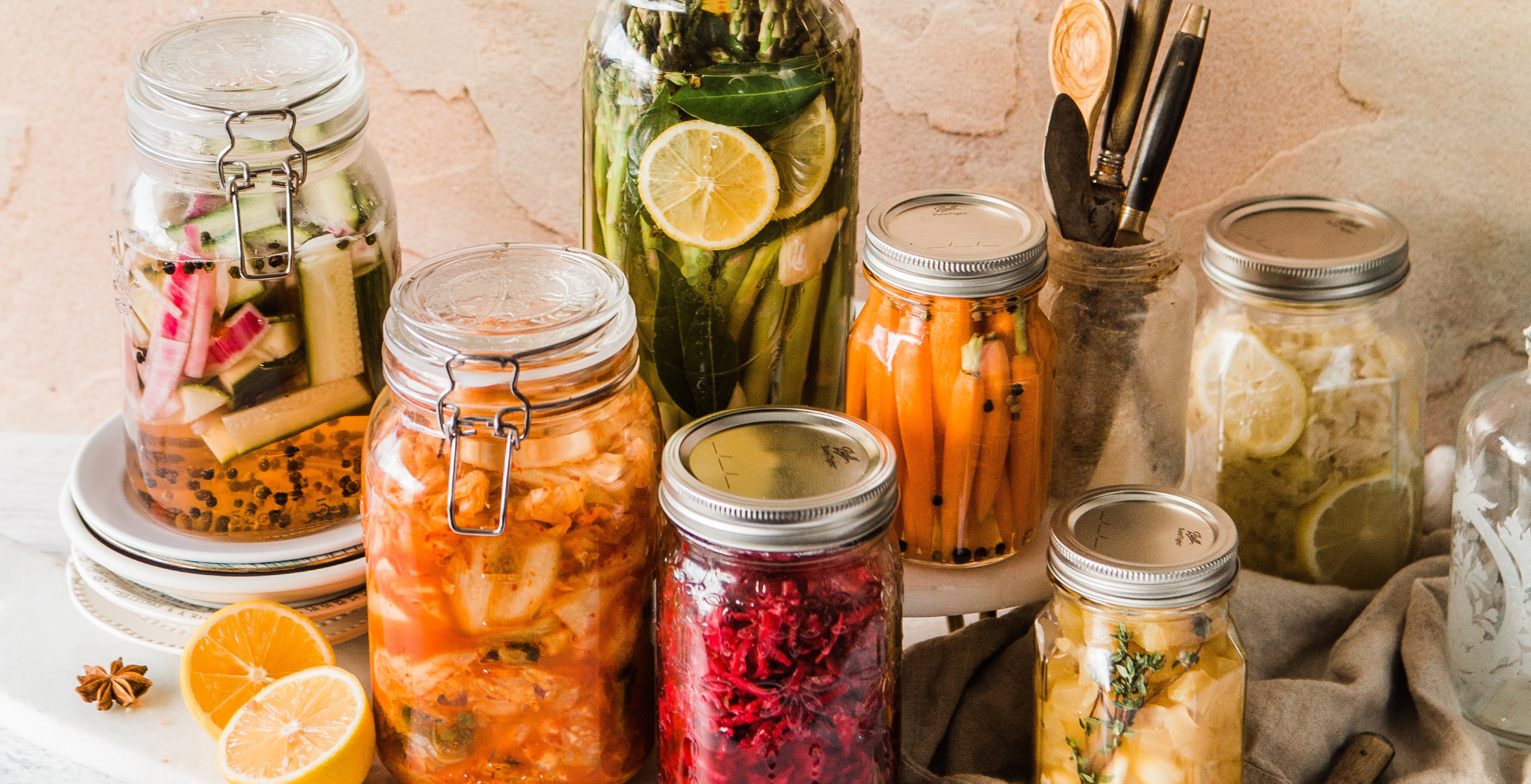Simple Rainbow Kraut
Making sauerkraut at home is far more satisfying and affordable than buying it in the shop, and in my opinion more delicious too. At its simplest, only cabbage and salt are needed, however, in honour of the healing power of veggies, this recipe also includes carrot, beetroot, ginger and garlic, hence the name ‘Rainbow Kraut’. Wait with patience and within 1-2 weeks you will have a batch of sauerkraut that you can add to meals for a daily dose of beneficial probiotics. It goes amazingly with salads, eggs, avocado, fish, meat, and even in a cheese toasty.
Pippa's Top Tip - to get the most active bacteria from your kraut, use clean utensils when taking the kraut from the jar for meals, and avoid the double dipping!
 Servings: 1x large Kilner jar Time: Prep 20 minutes + 10-14 days to ferment
Servings: 1x large Kilner jar Time: Prep 20 minutes + 10-14 days to ferment
Ingredients
1kg white or red cabbage (about 1 large head),
2 tsp sea salt (plus more to taste)
2 small carrots, peeled and grated
1 small beetroot, peeled and grated
large knob ginger, peeled and grated
4 garlic cloves, minced
½ onion to weight the mixture down
Optional: 1 tbsp fennel or caraway seeds
Method
- Start by sterilising the jars and lids you are using with boiling water, this is really important to ensure that nothing disrupts the fermentation process. Dry thoroughly.
- Remove the hard outer leaves of the cabbage, slice into chunks small enough for a mandolin or grater, then grate the cabbage finely into a mixing bowl.
- Add 1 ½ tsp sea salt then, using clean hands, rub the cabbage firmly with the salt for at least 10 minutes until water starts to leak out of the cabbage and it softens and shrinks in size.
- Next add the grated carrot, beetroot, ginger, garlic and combine thoroughly with your hands. Massage for another 5 minutes or so.
- Finally add in the remaining ½ tsp sea salt and fennel/caraway seeds (if using).
- Using clean hands or sterilised tongs, add the kraut mix to the Kilner jar and push the mixture down firmly to ensure it is packed in and covered by the natural juices.
- Leave some room at the top for expansion once the bacteria works its magic, then weigh down the mixture using half an onion.
- Seal the jar with the lid and leave the mixture to ferment at room temperature and away from direct sunlight for at least 10 days, opening the jar once per day to release any gas produced by fermentation and to ensure the kraut is still submerged. If it isn’t covered, push down with sterilised tongs until covered.
- After about 10 days you can taste your sauerkraut and assess whether it is sour enough for your liking. Leave for a little longer if not, or transfer to the fridge to enjoy for up to 6 months.

